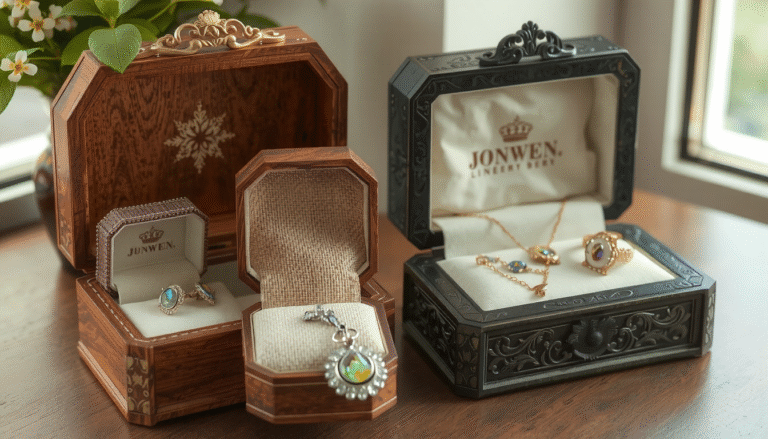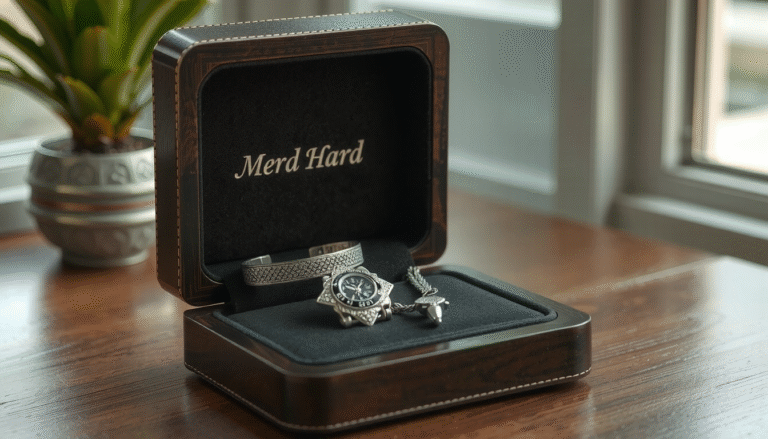The First Impression: Why a Small Box is a Critical Asset
The jewelry business, unlike most, considers sale to be a process that is not concluded after payment is accepted but rather after the customer has their beautiful product with them. The small box you select is the customer’s first actual experience with your brand after buying from you.
This moment is important. An inexpensive, plain box can easily act to reduce the perceived quality of fine jewelry. We have all witnessed this effect. The “cheap box for expensive jewelry” problem encountered by customers leads to them feeling let down. On the other hand, the use of premium quality packaging is totally different. It not only makes the whole process pleasurable but also showcases the quality and attention to detail that the jewelry maker put into it.
In the online world and social media, this goes further than delivering the item. The “unboxing experience” is an article for free advertising and marketing. A beautifully designed box not only stays with the customer but it goes through the media too. One sale eventually leads to the brand reaching out to many. The guide offered provides detailed information related to the problem statement when a jewelry store buys small boxes.
Decoding Your Options: A Jewelry Box Breakdown
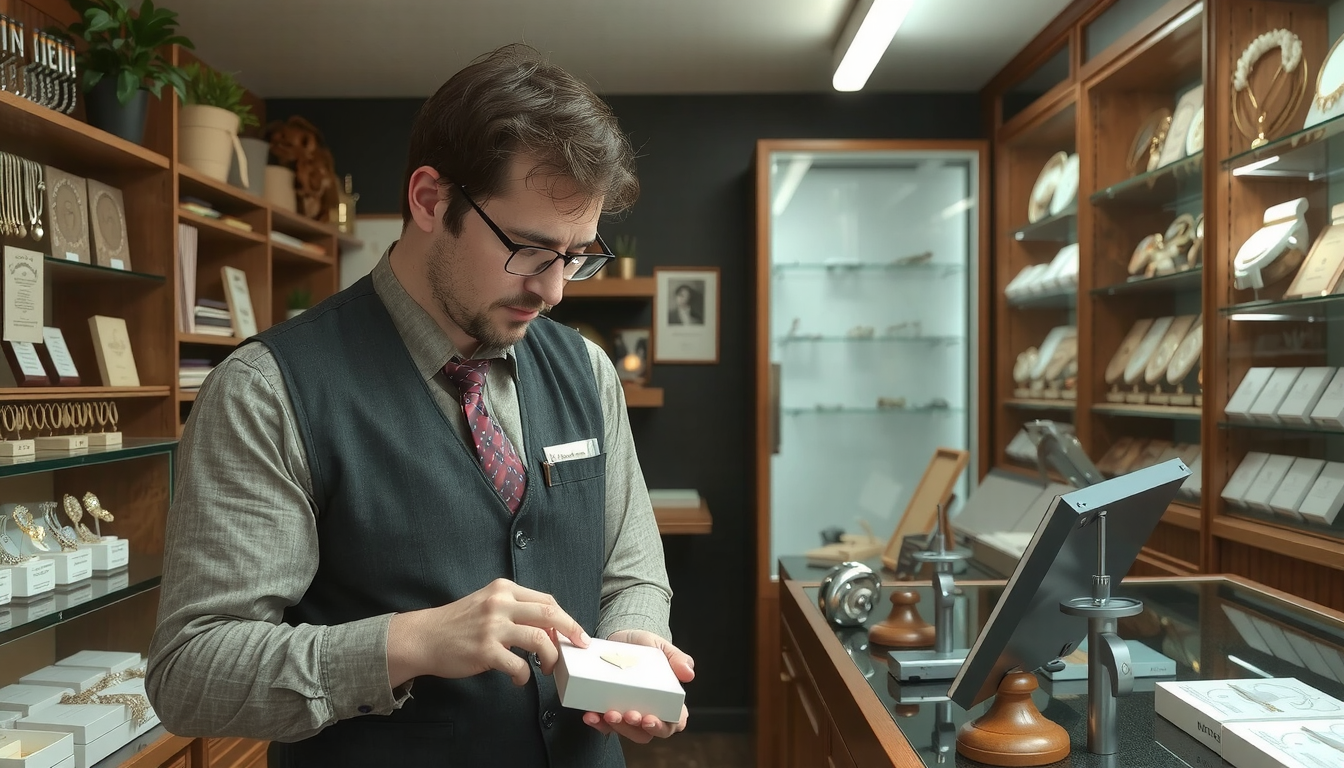 Before you can buy smart, you need to know what’s out there. It starts with the basic understanding of materials, other styles, and inserts when a jewelry store buys small boxes. This means that with your knowledge on those three subject areas, you are able to choose the right material for your products that fit and also go well with your brand.
Before you can buy smart, you need to know what’s out there. It starts with the basic understanding of materials, other styles, and inserts when a jewelry store buys small boxes. This means that with your knowledge on those three subject areas, you are able to choose the right material for your products that fit and also go well with your brand.
Choosing the Right Material
The material that you opt for your box will set a tone first for the whole unboxing experience. It encodes the message of value and quality that customers receive, and it may even communicate the very essence of what your brand stands for. In our marketing strategy ideas, we list the top materials that we think will suit your needs the best.
| Material | Pros | Cons | Best For |
|---|---|---|---|
| Cardboard/Paperboard | Inexpensive, lightweight, and highly customizable. Shipped flat. | Not as sturdy, and it doesn’t have a luxury feel. | Daily sales, online orders, and high-volume quantities. |
| Rigid Board | High end of the market, very durable, and print and brand well. | Expensive and heavy. | Women special occasion rings, mid to high collectibles. |
| Velvet/Fabric Covered | Classic premium touch, soft to the touch and presentation is excellent. | More expensive, prone to collecting dust, and cannot be personalized. | High-quality rings, necklaces, and earrings; heritage luxury brands. |
| Wood | An ultra-premium look that lasts a lifetime, provides very good protection to it. | It’s the heaviest of the options, and it’s the most expensive. | Higher-end watches, custom commissions, statement heirlooms. |
| Eco-Friendly Kraft | It’s biodegradable, with a rustic, all-natural feel, and is often produced from reclaimed products. | Colors are limited, and the finish might be less refined. | Eco-friendly brands, handmade, or artisanal jewelry. |
Common Styles and Inserts
Next to the material, the way of building the box and what goes inside, are important factors for the appearance as well as for the protection of the item.
- Two-Piece Boxes: This is the classic “lid and base” style. The lid-and-base style is flexible because it is easy to find and generally the cheapest option for a new jewelry store.
- Hinged Lid Boxes: The added lid makes a cleaner, smoother, and more elegant opening, and the associated hinged box feels more solid. You often find this style with rigid board or wood boxes.
- Drawer-Style (Matchbox) Boxes: This is a modern and interactive choice. The sliding drawer creates a unique moment for the reveal. This style is an excellent idea for the unboxing experience.
- Inserts: The insert isn’t an afterthought. It’s essential for safety. Foam with cut-out slots works perfectly for rings and earrings. Flocked inserts give a softer, more luxurious bed for delicate necklaces and bracelets. Simple cotton fill costs less for general use but offers less security for specific items.
The variety of Wholesale cardboard jewelry boxes that major suppliers have available only shows how many combinations of style and insert there are.
The Strategic Sourcing Framework: How to Buy Small Boxes
Making a smart buying decision goes beyond just picking a box you like. Buying small boxes at a jewelry shop becomes simpler and more reliable when you adhere to a clear plan; this way, you will reduce the risk and ensure that the packaging meets your business objectives.
Step 1: Assess Your Core Needs
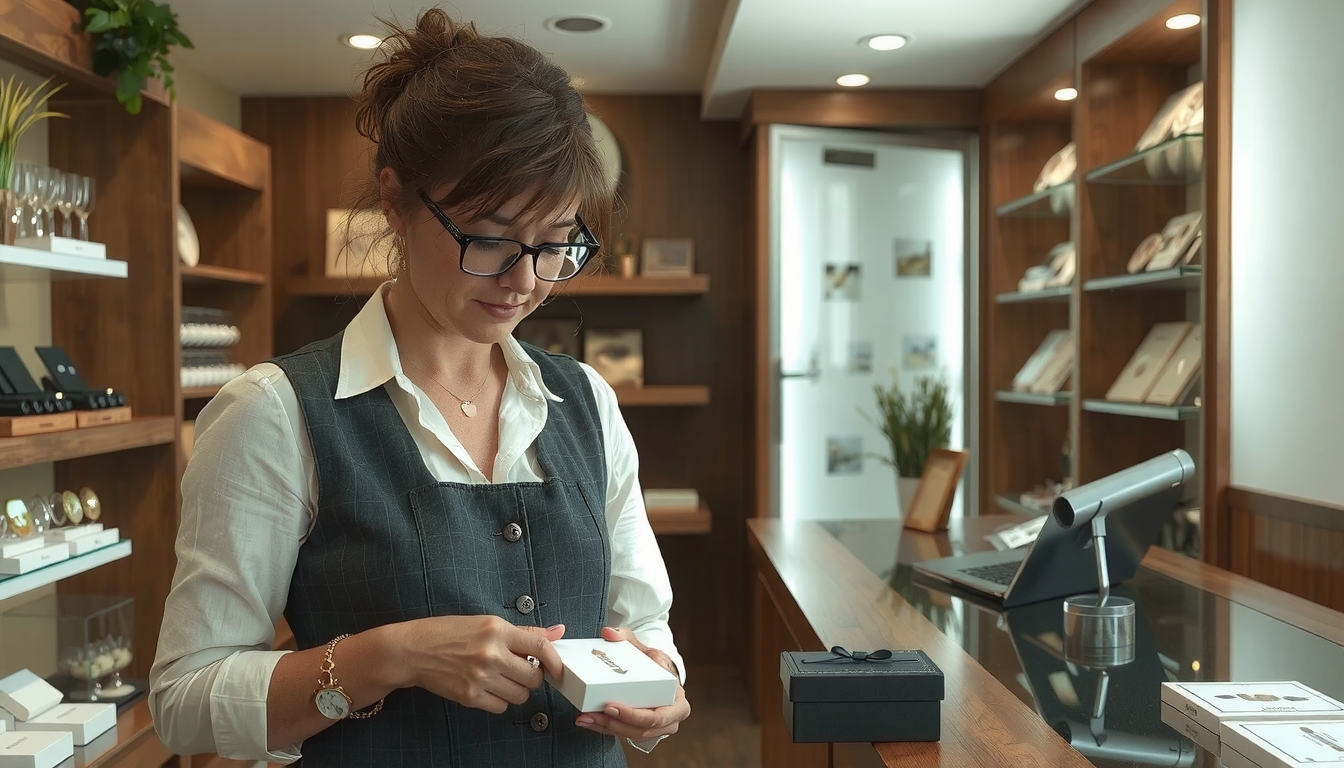
First, define what your boxes need to do.
- In-Store vs. Shipping: Are these boxes for over-the-counter sales, where looks matter most? Or do they need to be tough enough to survive shipping? A box made for display may not work for shipping.
- Jewelry Type & Size: Don’t guess. Actually measure your main products. A delicate chain necklace needs a different box and insert than a chunky cuff bracelet or hoop earrings.
- Storage Space: Where will you keep your box inventory? Boxes that ship and store flat, like many two-piece paperboard options, can save lots of space in a crowded stockroom.
Step 2: Align with Your Brand & Budget
Your packaging directly represents your brand.
- Is your brand minimal and modern, luxurious and classic, or rustic and eco-friendly? The material, color, and style of your box must match this identity consistently. A mismatch confuses your brand message.
- Set a realistic cost-per-box budget. Factor this cost directly into your product pricing. A beautiful box is an investment, not just an expense, but it must be sustainable.
Step 3: Find Your Supplier: Wholesale vs. Custom
Now, decide where to get your boxes.
- Wholesale: Buying stock boxes from a wholesale supplier is fast, affordable, and has low minimum orders. This is great for new businesses and artisans. The main downside is that competitors may use the same box.
- Custom: A custom-designed box offers unmatched brand reinforcement and a unique customer experience. But it costs more, requires larger minimum orders, and takes longer. This is ideal for established brands looking to stand out. We offer a complete guide for businesses seeking custom packaging solutions.
Step 4: Test and Finalize
Never commit to a large order without testing.
- Always order samples first. A box that looks great online might feel flimsy in person.
- Test the samples with your actual jewelry. Does it fit securely? Does the lid close properly? Does the insert hold the piece in place? Check the material quality, edge sharpness, and overall construction.
The Bottom Line: Bulk Orders, Customization, and Your Budget
The money side of sourcing is crucial when a jewelry store buys small boxes. Understanding how volume, customization, and cost work together will help you make the smartest decision for your bottom line.
The Bulk Buying Equation
The easiest way to cut packaging costs is to order more. Cost-per-unit drops significantly with bulk orders, as suppliers can optimize their production runs.
But this creates a classic business trade-off. You must balance long-term cost savings against the short-term cash impact of tying up money in inventory. For a detailed look at these savings and how they improve efficiency, see our The Complete Guide to Buying Bulk Jewelry Boxes.
Investing in Customization: What to Expect
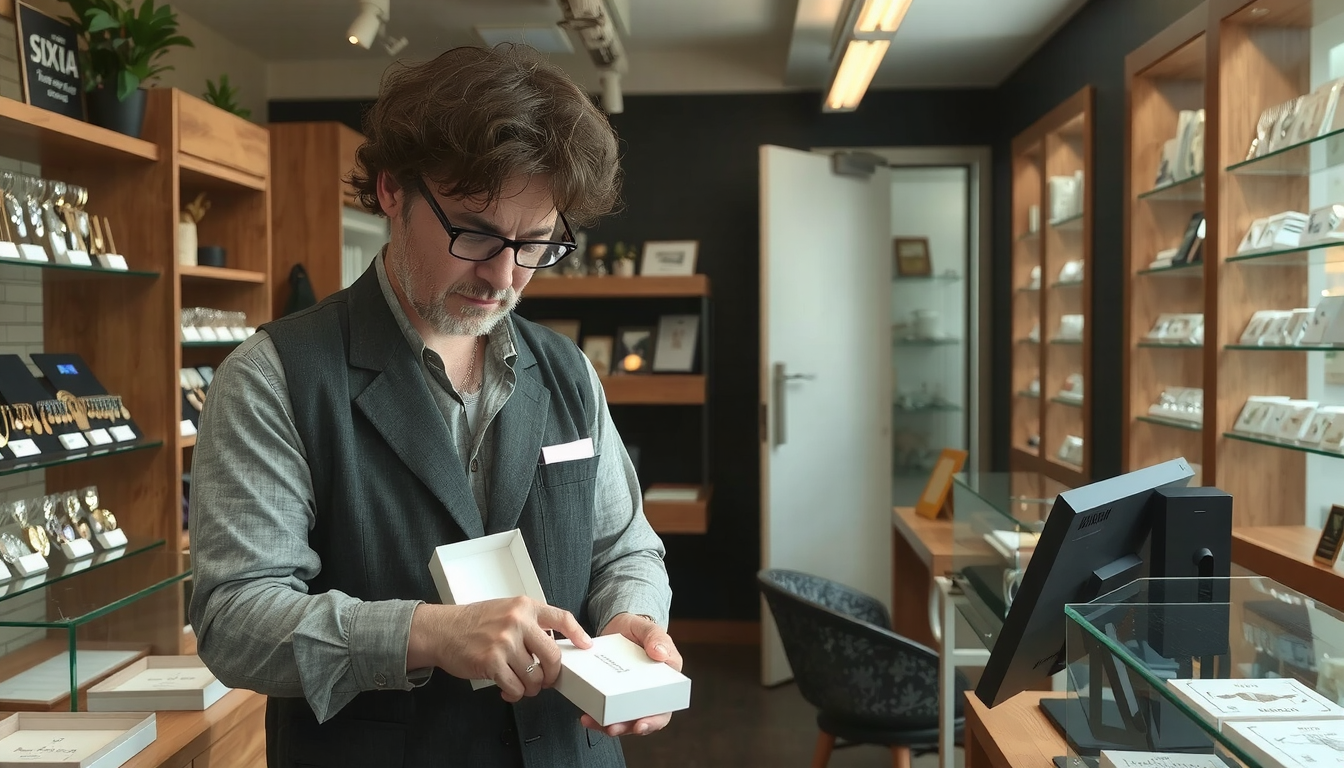
Customization makes a box uniquely yours, but it comes with extra costs and considerations.
- Common Customizations: The most popular option is hot foil stamping a logo. Other choices include custom color matching for the box paper, creating unique cut-out inserts for specific products, and adding branded ribbons or sleeves.
- Cost and Impact: Customization adds to unit cost and extends production time, but it offers the highest possible brand impact. For logo printing, expect initial setup fees for creating the printing plate, which can range from 50to200. This is often a one-time cost for that specific design.
From the Jeweler’s Bench: Pro-Tips and Common Pitfalls
After years in the industry, we’ve seen what works and what doesn’t. This firsthand experience can help you avoid common mistakes that many jewelers make when they first start sourcing their packaging.
Shipping & Protection: A Jeweler’s Perspective
Your beautiful box is useless if it arrives crushed. The packaging journey for an online order is much tougher than a hand-off in a showroom.
Always use a solid rigid or heavy-duty cardboard box for shipping, not a thin folding gift box. The box needs to be able to withstand weight and drops. Many jewelers have also found success by adding insulation within the box itself. As seen in the very valuable discussion among professional jewelers, for example, placing one item in a little anti-tarnish bag before putting it in the box insert provides an extra service that customers appreciate.
Pitfalls to Avoid
 Stay away from these common errors:
Stay away from these common errors:
- The Mismatched Box: Never put a $5,000 diamond ring in a 50-cent cardboard box. The packaging must feel right for the value of what’s inside.
- Ignoring Storage: Excitedly ordering 5,000 boxes only to realize you have nowhere to store them is a common and costly mistake. Check your storage space first.
- Forgetting the Insert: A beautiful box fails if the jewelry rattles around inside. A snug, secure insert is essential for both protection and professional presentation.
Conclusion: Your Small Box is Your Brand’s Handshake
The journey of how a jewelry store buys small boxes is much more than a simple buying task. It’s a strategic decision that affects marketing, branding, customer experience, and financial planning.
From understanding materials and styles to developing a sourcing plan and avoiding common mistakes, every choice matters. The right box enhances the perceived value of your art, builds your brand identity, and delights customers from the moment they receive it. Choose a box that tells the story your jewelry deserves.
Frequently Asked Questions (FAQ)
1. How much should a small jewelry store budget for small boxes?
It varies, but a good starting point is 1-3% of the item’s retail price. For a 100item,budget1-$3 for packaging. This cost-per-unit can drop significantly with bulk orders.
2. What is a typical minimum order quantity (MOQ) for custom jewelry boxes?
MOQs for custom boxes typically start between 500 to 1,000 units, depending on the supplier and customization complexity. Some suppliers may offer lower MOQs for simpler logo printing on stock boxes.
3. How do I ensure my jewelry is protected during shipping?
Use a rigid or sturdy cardboard box, not a flimsy folding one. Make sure the insert holds the jewelry snugly. Place the jewelry box inside a padded mailer or larger shipping box with filler material to prevent movement.
4. Are eco-friendly jewelry boxes a good investment?
Absolutely. If your brand focuses on sustainability, using boxes made from recycled materials or certified by the FSC (Forest Stewardship Council) strongly reinforces your brand values and appeals to eco-conscious consumers.
5. Where can I find reliable suppliers when a jewelry store buys small boxes?
You can find reliable suppliers through online wholesale marketplaces, packaging trade shows, and by searching for “wholesale jewelry packaging suppliers.” Always check out a new supplier by ordering samples before placing a large order.



